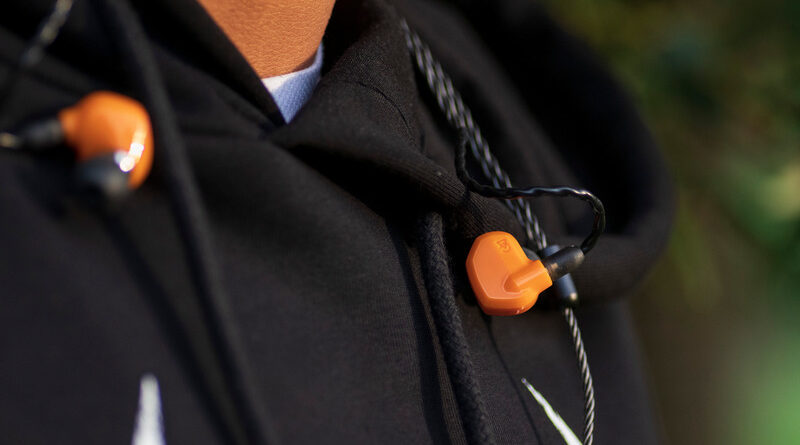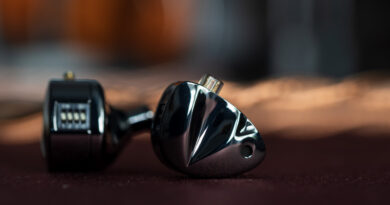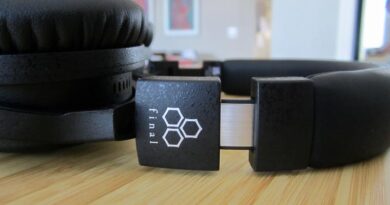Campfire Audio Satsuma Review – Orange Is The New Neutral
Pros — Accessory pack
– Comfort and Isolation
– Good stock cable
– Good imaging and separation for a single-BA
– Bass extension is good for a single-BA
Cons — Campfire Audio Satsuma has a plastic housing
– Lack of sub-bass rumble and impact
– Peaky lower-treble leads to fatigue
– Not the best technicalities in the price-range
– BA timbre
In this Article
INTRODUCTION
Campfire Audio needs to introduction at this point. Hailing from Portland, Oregon they’re known for the TOTL models in Andromeda and Solaris. Usually their products are priced in the middle and upper-tier ranges, so when something like Satsuma (priced at $200) arrives it does draw some attention. It used to be (now discontinued) Comet that held the budget spot, so the Satsuma is a spiritual successor of sorts, albeit in a different clothing.
Being a single-BA model and going for a “balanced/natural tuning” (as per Campfire’s promo materials), the Campfire Audio Satsuma faces stiff competition from IEMs priced below and higher. Let’s see if it can measure up to the task.
Note: the ratings given will be subjective to the price tier. Campfire Audio was kind enough to send me the Satsuma for the purpose of evaluation (thanks Ken!)
Sources used: Hidizs AP80 Pro, Lotoo PAW 6000
Price, while reviewed: $199. Can be bought from Campfire Audio’s Storefront.
PHYSICAL THINGS AND USABILITY
PACKAGING AND ACCESSORIES
Accessories and packaging are two things Campfire Audio never skimps on. The Satsuma is packaged as well as their high-end products and comes with a plethora of tips including my personal favorite Final E-type (5 different pairs). The cable this time is the Smoky Lite SPC 4-core cable with Beryllium-Copper connectors. You also get a nice carrying case alongside the signature Campfire lapel pin and a cleaning tool.
No qualms in the accessories department. Supplied ones are all of high quality and negates the need for third-party alternatives.
5/5
BUILD QUALITY
The Campfire Audio Satsuma’s build quality will be rather divisive. While metal alloy shells and resin have been the most popular material choices in terms of IEM shell, Campfire Audio went for a different route and picked… ABS plastic. The bright orange colorway would be difficult to pull off without an ABS shell, but the durability remains a question mark. Plastic, after all, won’t be as durable as resin/metal.
There’s a noticeable seam on the shell (where the two parts join), which is another minor annoyance. The spout is stainless steel, at least, and these sport the same robust mmcx connections as Campfire’s higher-tier models. Overall, I am not too impressed with the material choice and overall finish here.
3.5/5
COMFORT, ISOLATION, AND FIT
Due to the lightweight nature and lack of vent, comfort and isolation is at a high level. The IEM shape is also very ergonomic and should fit even smaller ears (with appropriate tips).
4.5/5
SOURCE AND EARTIPS
I used the supplied Final E-type tips and did most of the listening on Hidizs AP80 Pro. I did also try on the Lotoo PAW 6000 DAP and Questyle CMA-400i DAC/Amp but the Satsuma didn’t really scale much with source. It did pair better with warmer sources than the analytical ones. In terms of amping needs – at 46ohms and a low sensitivity (exact figures in mW not given but should be ~98dB/mW) the Satsuma does require a bit more juice than usual. It’s not too hard to drive though, just get ready to push the volume up at times.
DRIVER SETUP
The Campfire Audio Satsuma uses a single, full-range balanced armature driver with a ported design (there’s a small opening at the back of the unit). While Campfire Audio doesn’t disclose the exact driver model I guess it’s one of the Knowles RAB series full-range drivers (e.g. the RAB-32257). The driver sits within a 3D-printed acoustic chamber and does not use the typical filter-based designs. Instead, Campfire tunes the acoustic chamber itself to reduce resonance and shape the FR.
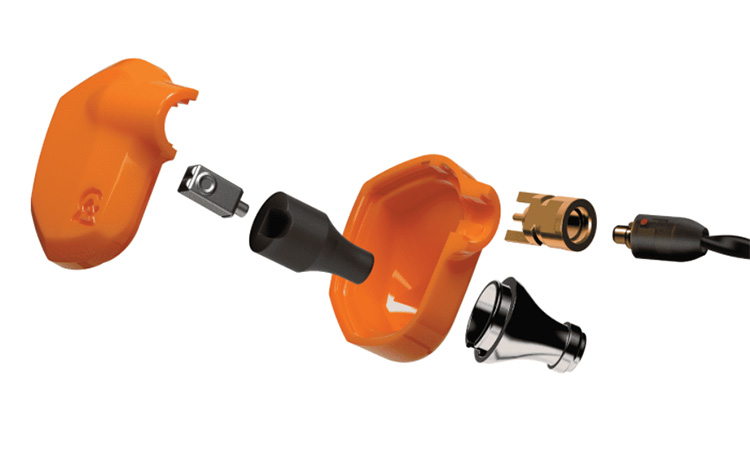
TONALITY AND TECHNICALITIES
In terms of overall tonality, the Campfire Audio Satsuma can be described as neutral with a lower-treble emphasis. The Satsuma isn’t really bright sounding per-se, but the lower-treble peak (between 6-7KHz, depending on insertion depth/tip) is noticeable in occasions.This focus on upper-registers give the Campfire Audio Satsuma a sense of clarity and cleanliness, at the expense of long-term listening comfort. You can use the supplied foam tips to somewhat dampen the treble but then the Satsuma sounds even less dynamic and bland, so I would consider that a downgrade.
For a single-BA driver, the bass here is decent, but not class-leading. Sub-bass rumble is only noticeable above 40Hz, anything below is just a low hum devoid of texture and subtlety. Bass slam is weak, so is the perceived texture. Bass speed is slightly slower than non-ported BA designs.
The mid-bass is better defined and the slight emphasis of upper-bass frequencies lend some warmth to the lower-mids. The transition from lower-mids to upper-mids is oddly handled. The 1-2KHz range is mostly flat and then there’s an abrupt shift towards 3.5Khz by almost 10dBs. This leads to certain male vocals sounding constrained in the upper-registers whereas most female vocals sounded fine. Due to the mid-bass boost, the shoutiness in the upper-mids were mostly constrained (unless you are listening to a vocal-centric track with little bass, e.g. Damien Rice’s I Remember, 2:46 onward). Other than that, string instruments sounded fine.
While the mid-range tonality is fairly good (barring high-pitched male vocals), the lower-treble peak (~6KHs to my ears) can be fatiguing in the long run. It’s not only grating in tracks like The Pretty Reckless’ Death by Rock and Roll, it also make the percussion instruments sound compressed. There’s another peak ~8KHz and then the treble tapers off post 10KHz. Not a lot of air frequencies here, but the fatigue is mostly caused by the aforementioned lower-treble peakiness coupled by another mid-treble peak.
Soundstage is not that wide, but the Satsuma does not sound congested at all. Imaging is above average for the price but not an absolute standout, as you don’t quite feel the sense of ordinality (top-left/bottom-right etc.). What the Satsuma does best is separation and layering. However, neither of those aspects are class-leading (more on this in the comparison section). Overall dynamics is nothing to write home about. Microdynamics are average whereas macrodynamics are compressed and sudden bass impacts lack the immediacy and slam one expects. Overall resolution is also middling for the price category, and the timbre has a slight BA artificiality to it (though less than some of its peers).
Bass: 3.5/5
Midrange: 4/5
Treble: 3/5
Staging: 4/5
Imaging and Separation: 4/5
Dynamics and Speed: 3/5
FREQUENCY RESPONSE GRAPH
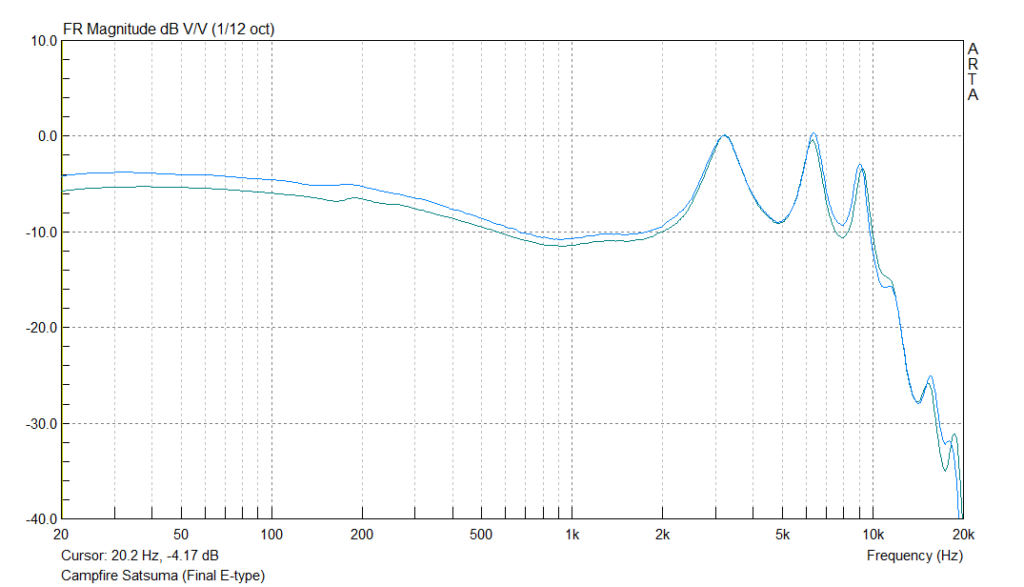
The ~2dB channel imbalance under 200Hz is mostly within specs and isn’t noticeable while listening.
SELECT COMPARISONS
vs Campfire Audio Honeydew ($250): While the Campfire Audio Satsuma and the Honeydew are priced closely and have similar designs, they have a polar-opposite sound signature. Satsuma goes for a mostly balanced, neutral-ish presentation whereas Honeydew throws caution to the wind and goes for a very V-shaped route with its single-DD setup. Bass is Honeydew’s bread-and-butter, whereas the staging is also very wide (due to recession in the mids among other reasons).
The Campfire Audio Satsuma and Honeydew are complementary rather than competitions of each other. If you need skull-rattling bass and don’t care much about mid-range emphasis, the Honeydew is the better option. For those looking for a balanced tuning: Satsuma is the one in Campfire’s entry-level lineup.
vs Etymotic ER3XR ($150): Etymotic ER3XR requires a special, deep-fit that bypasses the second-bend of the ear canal and for some it can be too painful. I can’t use Etymotics for more than half hour due to the discomfort they cause. So before going ahead with this comparison, I should point out that caveat.
In terms of isolation, the ER3XR surpasses the (otherwise very good) Satsuma. As for sound quality, Etymotic goes for a sub-bass boosted DF-neutral signature for the ER3XR (ER3SE is the one for those who want linear bass). As a result, there’s more of a sub-bass presence on the ER3XR than on the Satsuma, though both lack rumble and texture in the bass notes. Mids are also somewhat different with the ER3XR going for a dry, colorless midrange rendition wheres the Satsuma has some added warmth in the lower-mids. Upper-mids are also less prominent on the Satsuma than the ER3XR, which leads the latter to have more up-front voicing.
Indeed, vocals and instruments are better articulated on the Etymotic whereas the subtleties are less obvious on the Satsuma. Treble is also smoother on the ER3XR though both of these IEMs aren’t what I’d say sparkly in the treble region. Imaging and staging is notably better on the Satsuma (an inherent weakness of the Etymotic design) whereas separation is better on the ER3XR. Same goes for resolution where the ER3XR blows past the Satsuma, being perhaps the most resolving IEMs under $200.
I’d personally pick the ER3XR as long as fit isn’t an issue.
vs Final A4000 ($130): The Final A4000 is part of their new A-series model of IEMs and has a similar plastic shell to the Satsuma. It’s a single-DD design and the tuning decision was to focus on technical performance across the frequency range.
Well, Final A4000 is a single-DD IEM that has many characteristics of a BA IEM. However, the bass response is where it supercedes all single-BA designs incl. the Satsuma. Sub-bass rumble and bass impact is on another level altogether. Staging is also noticeably wider/deeper whereas the imaging is more precise. Mids are somewhat distant sounding vs the Satsuma though, and the treble is a different kind of spicy where the lower-treble peak causes long-term listening fatigue and doesn’t work at all with poor mastering, but isn’t too grating upon short listen. Overall resolution is also higher on the A4000 with subtle details being more readily picked up.
If you want a bit more engagement than the Satsuma tuning and can handle the peakiness of treble, the A4000 will be more technically proficient of the two.
CONCLUDING REMARKS
The Campfire Audio Satsuma is a mostly balanced sounding earphone that is let down by some questionable treble-tuning and middling technicalities. While the comfort/isolation is great and the accessories are plentiful, I’d prefer if it were more resolving and fatigue-free for the long-term listening sessions.
MY VERDICT
3.5/5
Does not stand out in terms of technical performance or tuning
DISCLAIMER
Get it from Campfire Audio
Our generic standard disclaimer.
PHOTOGRAPHY
You find an INDEX of our most relevant technical articles HERE.

